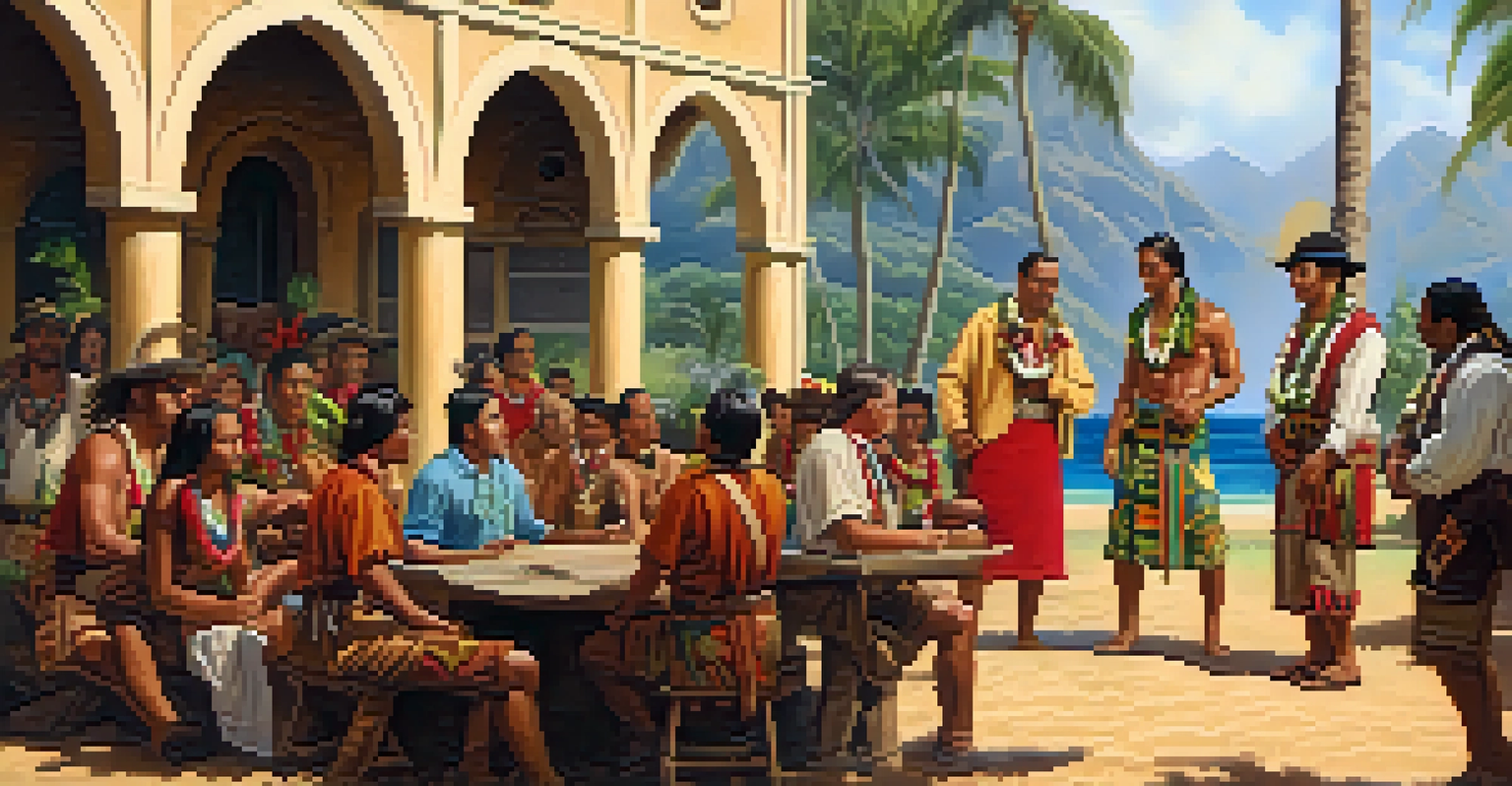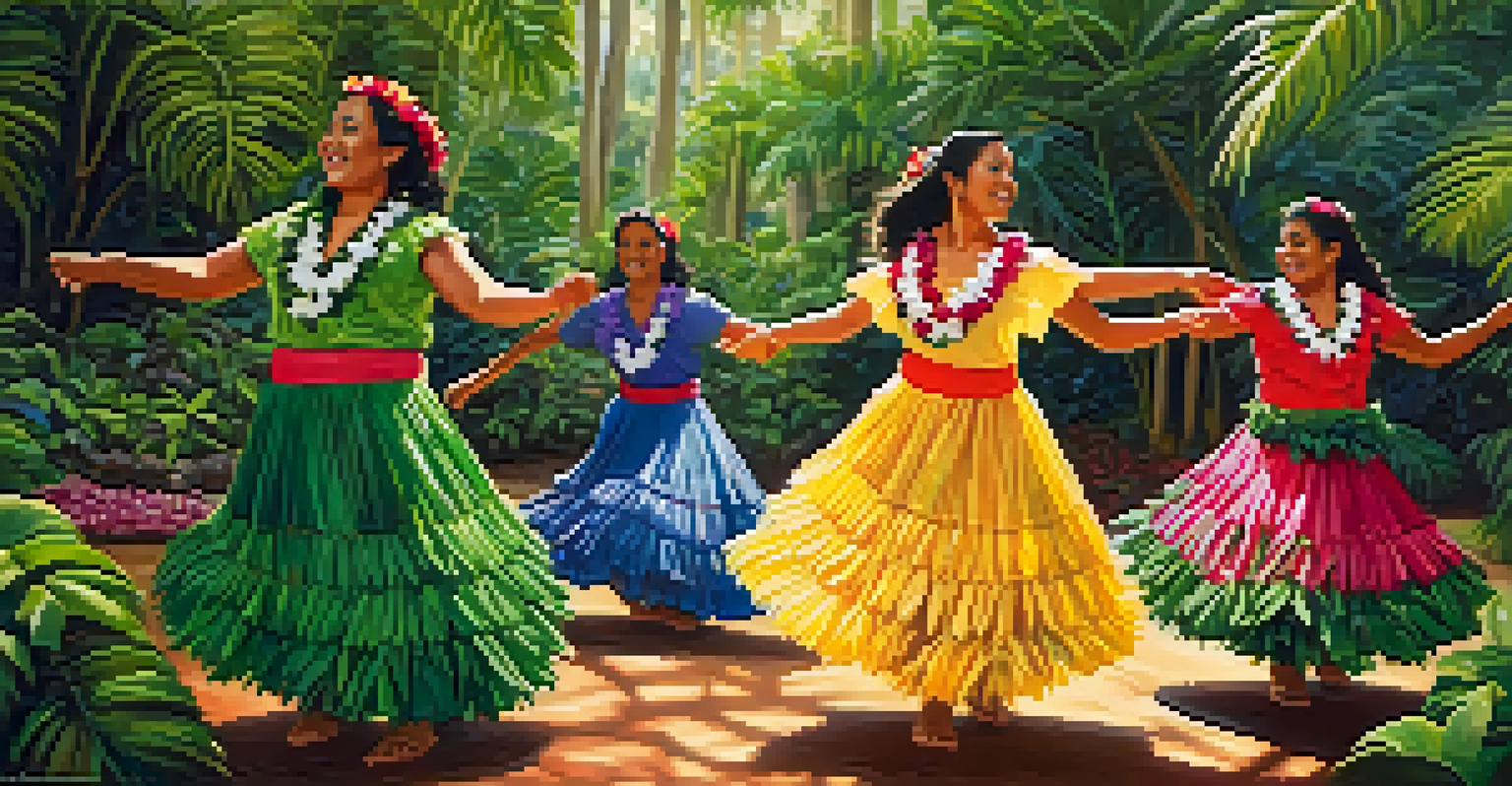Missionaries in Hawaii: Influence and Cultural Changes

The Arrival of Missionaries in Hawaii: A New Era Begins
In the early 19th century, American missionaries arrived in Hawaii, marking a significant turning point in its history. These missionaries, primarily from New England, aimed to spread Christianity and literacy among the Hawaiian people. Their arrival was not just about religion; it also introduced new ideas and practices that would reshape Hawaiian society.
The missionaries brought education and Christianity, but they also imposed their cultural values, often dismissing native traditions and beliefs as inferior.
Initially welcomed by the Hawaiian monarchy, the missionaries quickly established schools and churches, which became central to community life. They believed that education was key to spiritual salvation, leading to the creation of a written Hawaiian language, which had profound implications for communication and governance. This newfound literacy allowed Hawaiians to engage more deeply with the world around them.
However, the missionaries' influence was a double-edged sword. While they brought education and Christianity, they also imposed their cultural values, often dismissing native traditions and beliefs as inferior. This clash of cultures laid the groundwork for significant changes in Hawaiian identity and social structures.
Cultural Exchanges: Adaptation and Resistance
As missionaries worked to convert Hawaiians, a fascinating cultural exchange unfolded. Some native traditions were adapted to fit Christian practices, leading to the emergence of unique hybrid customs. For example, traditional Hawaiian music and hula were incorporated into church services, creating a new form of worship that retained elements of indigenous culture.

Despite this blending, many Hawaiians resisted the loss of their cultural identity. The imposition of Western values often led to tensions within communities, as some embraced the changes while others sought to preserve their ancestral ways. This dynamic highlights the complexities of cultural adaptation, where both acceptance and resistance played vital roles.
Missionaries Reshaped Hawaiian Society
The arrival of American missionaries in Hawaii introduced new education and religious practices that significantly transformed Hawaiian culture.
Ultimately, this period of cultural exchange significantly influenced Hawaiian society. It set the stage for ongoing discussions about identity, tradition, and the impact of outside forces on local cultures, themes that continue to resonate in modern Hawaii.
Education: The Missionary Legacy on Hawaiian Schools
One of the most lasting legacies of the missionaries in Hawaii was the establishment of schools. They believed that educating the Hawaiian people was essential for both spiritual and societal progress. This focus on education led to the founding of numerous schools, which played a crucial role in raising literacy rates and promoting Western knowledge.
The legacy of missionaries in Hawaii is multifaceted, encompassing both positive and negative aspects.
The missionaries' approach to education was comprehensive, emphasizing not only religious instruction but also subjects like reading, writing, and arithmetic. This broad curriculum laid the foundation for a more structured educational system in Hawaii, which evolved over the years to include a wider range of subjects and teaching methods.
However, this educational framework also had its drawbacks. While it provided valuable skills, it often sidelined traditional Hawaiian knowledge and practices. As a result, many native customs faced the risk of being forgotten, showcasing the tension between gaining new knowledge and preserving indigenous heritage.
Religious Transformation: From Polytheism to Christianity
The missionaries' primary goal was to convert Hawaiians to Christianity, which led to a profound transformation in religious practices. Traditional Hawaiian beliefs, which included worshiping multiple gods and goddesses, faced significant challenges as Christianity spread. This shift marked a pivotal moment in Hawaiian spirituality and culture.
As Christianity took root, many native practices were discouraged or outright banned. The missionaries viewed traditional beliefs as pagan and sought to replace them with their religious teachings. This effort often met with resistance, as Hawaiians grappled with the loss of their ancestral spiritual practices.
Cultural Clash and Adaptation
The interaction between missionaries and native Hawaiians led to a complex cultural exchange, blending traditions while also sparking resistance.
Despite these challenges, some aspects of traditional spirituality were integrated into Christian practices, resulting in a unique religious landscape. This blending of beliefs allowed Hawaiians to maintain a sense of cultural identity while navigating the realities of a changing world.
Economic Changes: Agriculture and Trade Shifts
The arrival of missionaries also brought significant economic changes to Hawaii. They encouraged the cultivation of new crops, such as sugarcane and coffee, which reshaped the agricultural landscape. This shift not only altered traditional farming practices but also set the stage for Hawaii's emergence as a vital player in the global economy.
As sugar plantations grew, so did the demand for labor, leading to an influx of immigrant workers from various countries. This migration brought diverse cultures and skills to Hawaii, further transforming its social fabric. However, the focus on cash crops often came at the expense of traditional subsistence farming, which affected local communities.
The economic changes initiated by the missionaries laid the groundwork for Hawaii's future prosperity but also contributed to the erosion of native agricultural practices. This dynamic illustrates the complexities of modernization, where progress can sometimes overshadow traditional ways of life.
Political Influence: Shaping Governance and Leadership
The missionaries' arrival coincided with significant political changes in Hawaii. They quickly became influential advisors to the Hawaiian monarchy, helping to shape governance structures and policies. Their involvement in politics transformed the relationship between the monarchy and the people, as Western ideals of governance took hold.
As they gained power and influence, missionaries promoted laws and practices aligned with their values, often sidelining traditional Hawaiian leadership structures. This shift created a new political landscape, where Western-style governance became the norm. The implications of this change are still felt today, as Hawaii navigates its unique political identity.
Economic and Political Shifts
Missionaries influenced Hawaii's agriculture and governance, promoting Western ideals that altered traditional practices and leadership structures.
While some Hawaiians embraced these new political ideals, others resisted, leading to tensions between traditional and Western systems of governance. This struggle for power and control highlights the ongoing complexities of identity and authority in Hawaii's history.
Legacy and Reflection: The Ongoing Impact of Missionary Work
The legacy of missionaries in Hawaii is multifaceted, encompassing both positive and negative aspects. On one hand, their contributions to education, healthcare, and infrastructure laid the groundwork for modern Hawaiian society. On the other hand, their efforts to impose Western values often led to cultural erosion and identity struggles.
Today, many Hawaiians reflect on this complex history, recognizing the duality of the missionaries' impact. While some aspects of their work brought progress, the loss of traditional practices and beliefs remains a poignant topic of discussion. This reflection invites ongoing dialogue about identity, heritage, and the influence of outside forces.

As Hawaii continues to evolve, the lessons from this historical period serve as a reminder of the importance of cultural preservation and respect for indigenous practices. The story of missionaries in Hawaii is not just a chapter in history; it's a call to understand and appreciate the rich tapestry of Hawaiian culture.